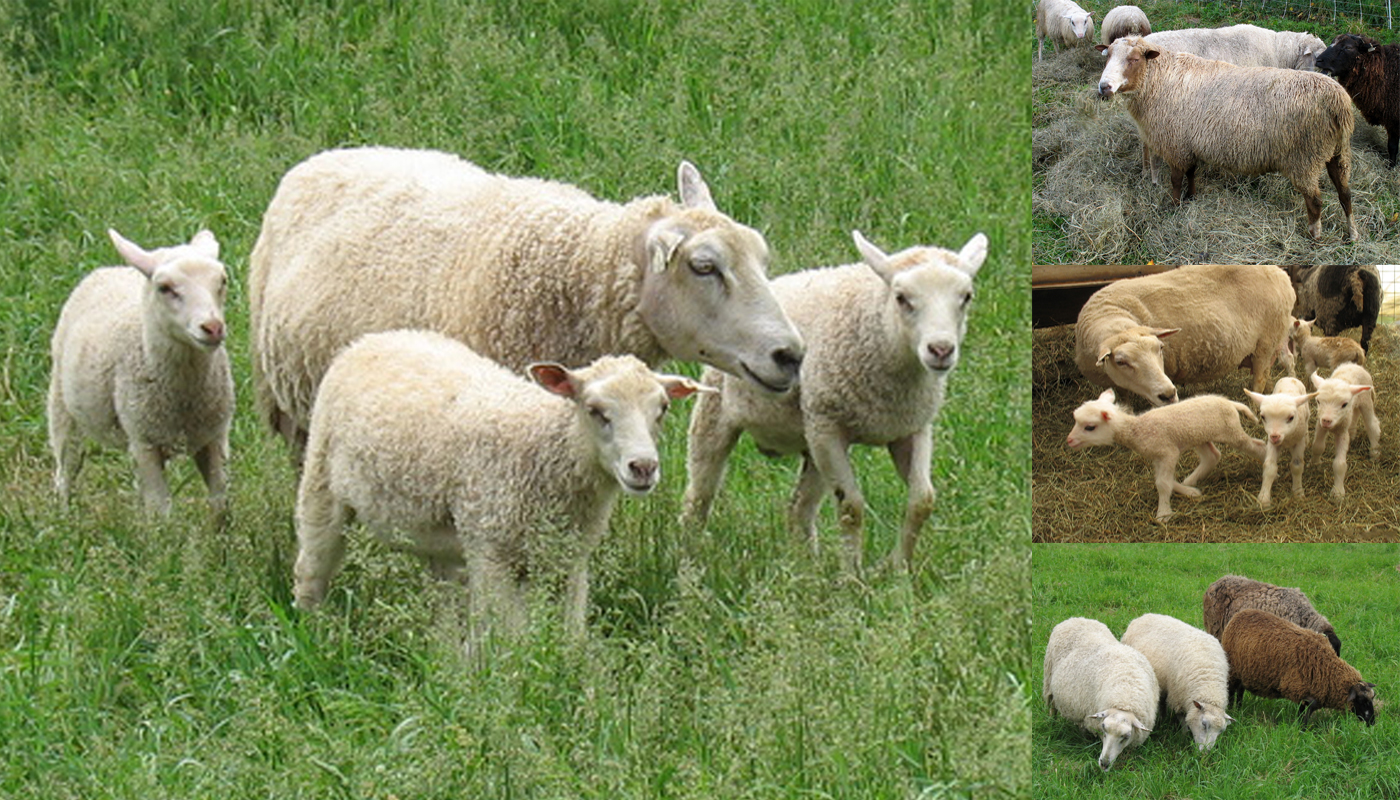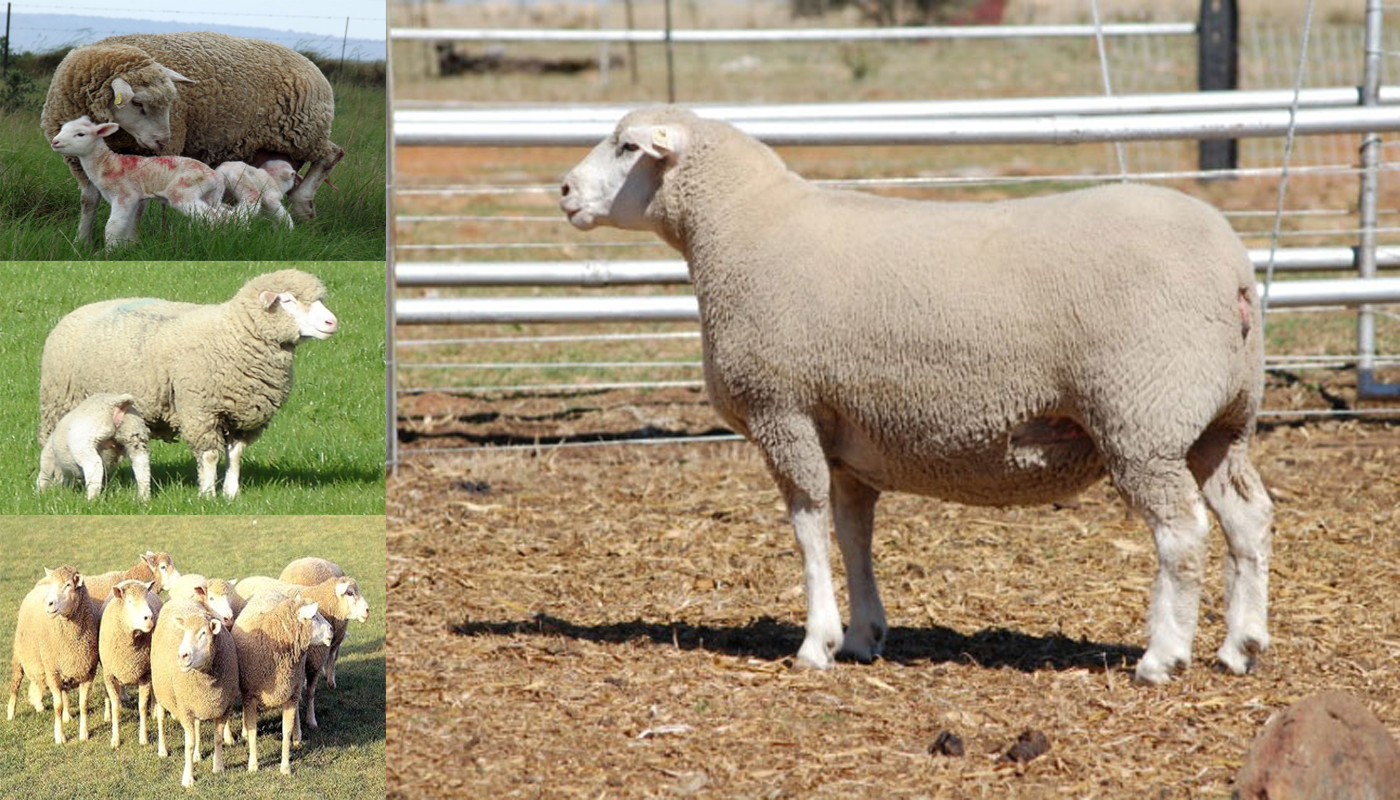
The Navajo-Churro sheep breed a medium sized breed of sheep with a medium to long woolen fleece that hangs around their body like soft fur found on a dog. The have long thin body that looks filled out due to their heavy coats. The rams have beautiful spiral horns that are set back against their head.
They are a dual-purpose breed that has much to offer farmers especially those in hot to dry or where the weather falls to sub-zero temperatures.
NAVAJO-CHURRO SHEEP QUICK PROFILE OVERVIEW |
|
|---|---|
| They are a docile and even personable breed of sheep with a beautiful soft coat of wool | |
| Country of Origin: | United States of America |
| Other Names: | Churro, America Four-Horned or Navajo Four-Horned sheep |
| Breed Size: | Medium |
| Main Purpose: | Meat and wool |
| Can be used for | Breed, **LSC, Meat, Skin, Wool |
| Temperament: | Docile and easy to handle |
| Ideal Climate: | Heat, Cold, Most climates |
| Conservation Status: |
listed by the *ALC Status/Rarity: Threatened/Rare |
| Health Issues? | No known health issues |
| Good Starter Sheep? | Novice to intermediate sheep farmers/keepers |
| Sheep Associations: | Navajo-Churro Sheep Association |
| Sheep Clubs: | Please refer to the Navajo-Churro Sheep Association for further information |
| Note: *ALC stands for American Livestock Conservancy ** LSC stands for Landscape Management – the animal is used for controlling various vegetation growth |
|
PHYSICAL CHARACTERISTICS |
||||||||||||||||||||||||||||||||
|---|---|---|---|---|---|---|---|---|---|---|---|---|---|---|---|---|---|---|---|---|---|---|---|---|---|---|---|---|---|---|---|---|
| They are a medium sized breed with a long slender carriage that is filled out by their thick woolen coat. They have a white face that is clean of wool and medium length strong legs. | ||||||||||||||||||||||||||||||||
| Color(s): | White, blue, black, red, silver, brown and spotted. There are quite a few colors and color formations/patterns for the Navajo-Churro breed | |||||||||||||||||||||||||||||||
|
||||||||||||||||||||||||||||||||
EWE BREEDING & MILKING INFORMATION |
|
|---|---|
| They are seasonal breeders, but the lambs mature quickly so they may produce two lamb crops a year if the rams are left with the ewes all year around. | |
| Breeding Period/cycle: | Usually lasts 24 to 36 hours |
| Estrous cycle: | Ave. 17 days/13 to 19 days |
| Gestation Period: | Usually, around 150 to 155 days but most gestation is 152 days |
| No. Lambs/Litter: | 1 to 2 (twins) although 3 (triplets) are not uncommon. |
| Lactation Period: | Usually, around 150 to 240 day but most are milked for 180 days |
| Milking From: | 4 to 6 weeks after lambing |
| Milk Quality: | Good – ***NDS, Quantity: Ave. 180 to 495 liters Per Lactation period |
| Milk Ideal for: | Lambs |
| Note: ***DS – stands for Dairy Sheep *** NDS – stands for Non-Dairy Sheep |
|
| You may Also Like: | 10 Best Sheep Breeds for Milk |
SHEEP MEAT PRODUCTION INFORMATION |
||||||||||
|---|---|---|---|---|---|---|---|---|---|---|
| For geneartions the Navajo-Churro sheep has been providing people with lean, sweet meat with its own distinctive flavor. The meat is tender, fine grained and very lean making for less wastage. | ||||||||||
| Meat Production: | Yes, Quality: Excellent | |||||||||
|
||||||||||
| You may Also Like: | 11 Best Sheep Breeds for Meat Production | |||||||||
SHEEP WOOL PRODUCTION INFORMATION |
||||||||||||||||
|---|---|---|---|---|---|---|---|---|---|---|---|---|---|---|---|---|
| The Navajo-Churro is one of the first wool breeds in the USA and has been used for famous Navajo rugs, saddle blankets and various weaves. The wool has two layers to it and is long, fine but coarse. The outer coat is long and of a staple length. The inner wool is softer and downier than the outer layer of their wool. Their coat consists of 3 different fiber types classed as inner coat, outer coat and kemp. | ||||||||||||||||
| Wool Production? | Yes, Quality: Coarse, Downy and kemp – Spinning count varies from the inner to outer coats. | |||||||||||||||
| Wool is used to Produce: | Blankets, saddle blankets, rugs, mats and outer garmets | |||||||||||||||
|
||||||||||||||||
| You may Also Like: | 18 Best Wool Producing Sheep Breeds | |||||||||||||||
SHEEP SKIN PRODUCTION INFORMATION |
|||||||
|---|---|---|---|---|---|---|---|
| Their sheep skin is fine and soft. It has been used for generations for rugs, pelts and various garments by the Navajo. | |||||||
| Skin Production? | Yes, Quality: Fine, soft and strong | ||||||
| Skin is used to Produce: | Rugs, pelts and outer garments. Chamois cloths, leather goods such as seats, shoes and other garments and leather materials such as furniture, etc. |
||||||
|
|||||||
GOOD TO KNOW ABOUT THE IL DE FRANCE SHEEP |
|
|---|---|
| A few more interesting facts to know about the breed | |
| Child-Friendly? | No livestock should be left unattended around children |
| Landscape Management? | Most sheep breeds are good for the landscape in some way or the other |
| Where to buy them? | Please refer to the Navajo-Churro Sheep Association for further information |
| General Information | They are a docile, personable and easy to handle sheep breed that have been around for a very long time. They were used by the Navajo for their wool in rugs, horse saddle blankets, blankets and their hides for clothes. |
HISTORY
The Navajo-Churro is one of the first breeds of sheep to be imported into North America around the 16th century. They were mostly used to feed Spanish settlers and army. By the 17th century the breed popularity had spread, and some flocks of the Navajo-Churro were being kept by the Navajo which they acquired through various trades.
The Churro sheep breed quickly became a good source of income for the Navajo as they used the sheep fleece for the weaving of fine, rugs, blankets and horse blankets. The soft fine leather from the sheep skin was used for rugs, pelts and various outer garments.
The Churro breed nearly disappeared due to commercial farming and various government-sponsored flocks of sheep. In the 1970’s the breed began to be revived by some sheep breeding enthusiasts started acquiring Churro phenotypes in order to preserve the breed. The numbers of the breed grew and although they are no longer in danger of extinction the breed is still considered rare and listed by the American Livestock Conservation.
USEFUL LINKS
- United States Lamb Resource Center
- American Sheep Industry Association
- American Sheep Industry Association List of Breed Associations & Standards
- American Milk Sheep Association
- Dairy Sheep Association of North America
- American Wool Council
- Fur Commission USA
- North American Meat Institute
- American Lamb Board
- National Lamb Feeders Association
- American Livestock Conservancy
- Animal Shelter (ASPCA)
- American Veterinary Medical Association
- American Animal Welfare Society
- American Animal Control
- American Animal Husbandry Society
- United States Department of Agriculture
 Top 20 Best Native British Sheep Breeds
Top 20 Best Native British Sheep Breeds Merino Sheep Breed – Everything You Need to Know
Merino Sheep Breed – Everything You Need to Know Targhee Sheep Breed – Everything You Need to Know
Targhee Sheep Breed – Everything You Need to Know Finnsheep Sheep Breed – Everything You Need to Know
Finnsheep Sheep Breed – Everything You Need to Know Ile-de-France Sheep Breed – Everything You Need to Know
Ile-de-France Sheep Breed – Everything You Need to Know Herdwick Sheep Breed – Everything You Need to Know
Herdwick Sheep Breed – Everything You Need to Know Romney Sheep Breed – Everything You Need to Know
Romney Sheep Breed – Everything You Need to Know 11 Best Sheep Breeds for Meat Production
11 Best Sheep Breeds for Meat Production Shetland Sheep Breed – Everything You Need to Know
Shetland Sheep Breed – Everything You Need to Know Texel Sheep Breed – Everything You Need to Know
Texel Sheep Breed – Everything You Need to Know Border Leicester Sheep Breed – Everything You Need to Know
Border Leicester Sheep Breed – Everything You Need to Know Barbados Black Belly Sheep Breed – Everything You Need to Know
Barbados Black Belly Sheep Breed – Everything You Need to Know
Very interesting article.